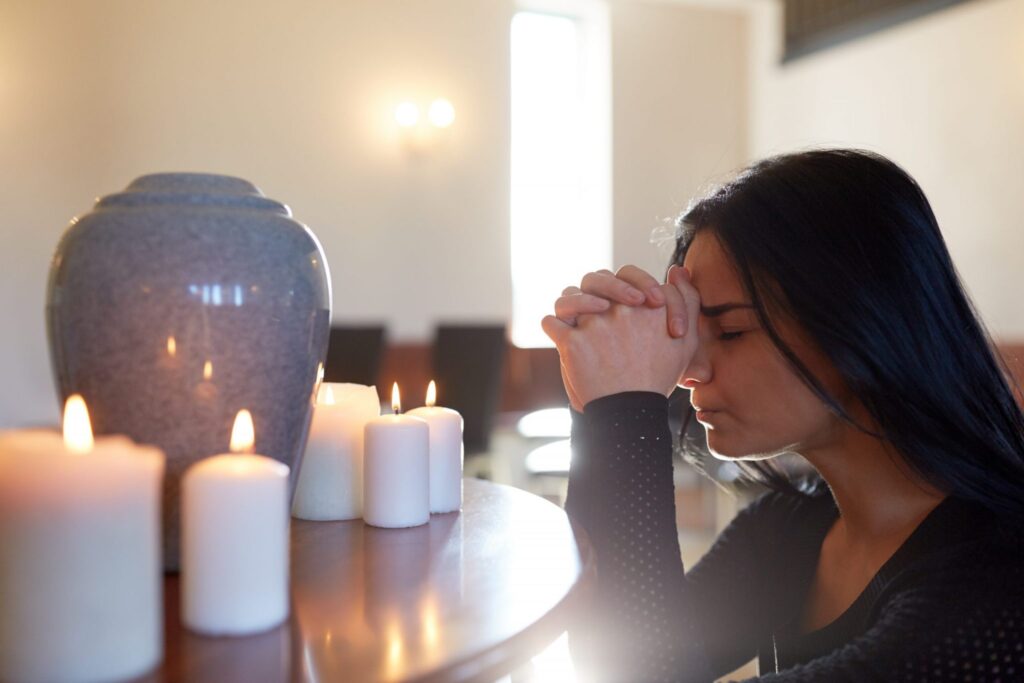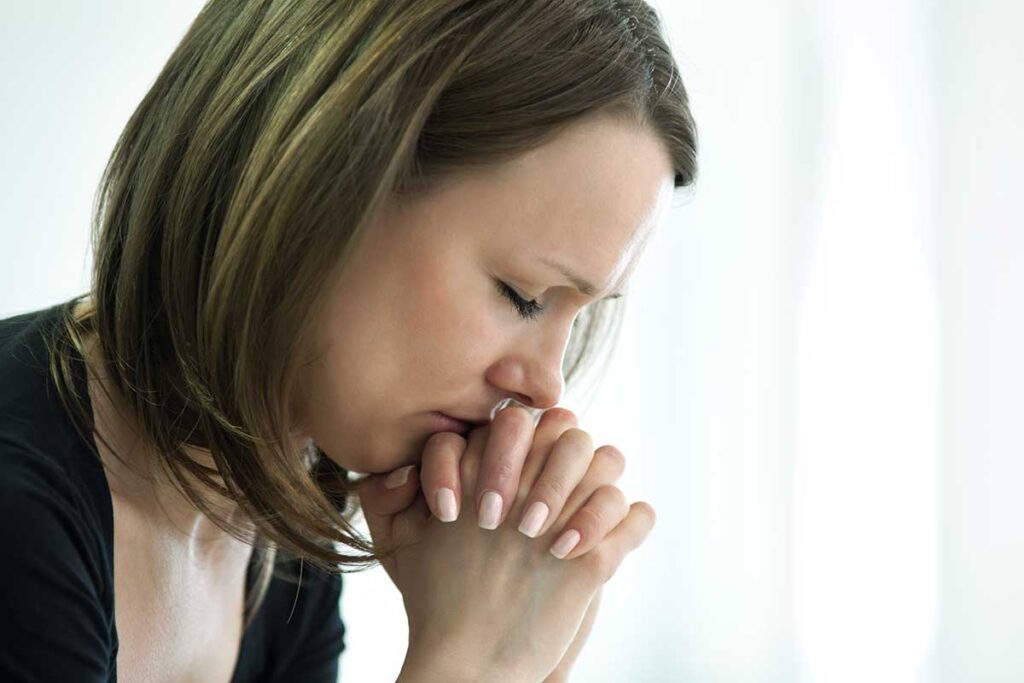Intro
Understanding grief is a journey that no one can fully prepare for until they experience it themselves. When we lose someone dear to us, the emotions that flood our hearts and minds can be overwhelming and all-consuming. In my own grief journey, there are many things I wish I had known sooner to help navigate the turbulent waters of loss.
Grief Is As Unique As Your Fingerprint


Embarking on a journey through grief can often feel like navigating an uncharted terrain, where the path is distinctly yours and no one else’s. It’s a deeply personal experience that manifests differently in everyone. Just as our fingerprints are uniquely ours, so too is the way we process and experience grief. This realization was a profound one for me; understanding that my grieving process was mine alone, devoid of comparison to others, allowed me to embrace and honor my feelings in their entirety.
We live in a society that sometimes seeks to standardize experiences, offering well-meaning but often generalized advice on how to cope with loss. However, grief defies such simplification. What brings solace to one person may not resonate with another. You might find comfort in solitude, while someone else might seek the company of friends and family. Similarly, what triggers a wave of sorrow in you might differ vastly from what affects another person. This diversity in grief is not only natural but should be acknowledged and respected.
Recognizing that your grief is as unique as you are is crucial. It empowers you to seek out the means of healing that resonate most deeply with you, without feeling pressured to conform to any external expectations or timelines. It’s a permission slip to allow your emotions to unfold in their own time and space, validating your individual experience as you navigate this complex terrain. In doing so, you honor not only your process but also the uniqueness of the relationship you’re grieving. Remember, there’s no “right” way to grieve, only what’s right for you.
The Myth of the Grief Timeline


The concept of a grief timeline is one of the most pervasive myths that surround the process of mourning. Many of us are led to believe, perhaps by societal norms or well-intentioned advice, that healing from loss operates on a predictable schedule. You might hear phrases like “time heals all wounds” or be given an arbitrary timeframe after which you’re expected to have moved on. This belief, however, couldn’t be further from the truth, and holding onto it may lead to unnecessary frustration and guilt.
Grieving is not a task to be completed within a set period, nor is it a race towards feeling “normal” again. The reality is much more complex. Emotions related to loss are not bound by a timetable. They don’t diminish on cue as weeks or months pass. Instead, the intensity of grief can fluctuate over time, influenced by dates, memories, and even the most mundane moments that suddenly hold a new significance.
In recognizing this, we free ourselves from the unrealistic expectation of a linear recovery. It allows us to understand that feeling moments of intense sadness, even long after the loss has occurred, is not a setback but a part of the ongoing process of healing. It highlights the importance of patience with ourselves and the understanding that our journey through grief is as individual as our relationship with the one we’ve lost.
By dispelling the myth of the grief timeline, we can approach our experience with kindness and allow ourselves the grace to heal in a way that is true to our hearts. This shift in perspective is not just about acknowledging the variability of grief but about embracing it as a path to genuine healing, at our own pace and on our own terms.
Expect Waves, Not Stages


Navigating through grief, I came to learn that the journey does not progress in a sequential order of stages as we’re often told. Rather, grief is more akin to waves on the ocean – it ebbs and flows unpredictably, crashing over us when we least expect it. This analogy was a pivotal shift in my understanding, offering a gentler framework for processing my emotions.
The waves metaphor encapsulates the non-linear nature of grief beautifully. Some days, the sea is calm, and we find ourselves moving through our routines with a semblance of normalcy. Then, without warning, a wave of sorrow might sweep us off our feet, triggered by a song, a date, or even a scent. It’s crucial in these moments to allow ourselves the grace to feel these emotions fully, without self-rejudgment or pressure to quickly ‘get over it.’
What’s comforting about thinking of grief as waves is the implicit reminder that, just as the ocean’s tumult eventually calms, so too will the intensity of our feelings. The waves may not cease entirely, but our ability to navigate them improves over time. With each wave, we learn more about our capacity for resilience, and about the depths of our love for the ones we’ve lost.
Embracing grief as a series of waves rather than a sequence of stages invites a more compassionate self-awareness. It reassures us that it’s natural for emotions to resurface, even after considerable time has passed. This understanding fosters a kinder, more patient approach to healing, one where we honor our pace and what our hearts need in the moment.
The Physical Impact of Grieving


In the midst of coping with the emotional torrent of grief, what often goes unrecognized is its physical toll on our bodies. The journey through loss doesn’t confine itself to the heart and mind; it weaves its way through our physical well-being, manifesting in ways that might catch us off-guard. It’s vital to acknowledge that feelings of exhaustion, changes in appetite, and inexplicable aches are not just common but an integral part of the grieving process.
This understanding came to me slowly, as I noticed the days where getting out of bed felt like a herculean task, or when food lost its taste. It was a reminder that grief is all-encompassing, affecting every aspect of our existence. These physical symptoms are our body’s way of signaling the need for rest, for care, and for gentleness towards ourselves during a time of profound change.
Moreover, it’s important to recognize that these manifestations of grief are not signs of weakness but indicators of the deep love and connection we had with our loved ones. They remind us that our bonds were not just spiritual or emotional but also physically ingrained in our daily lives.
Navigating this aspect of grief calls for an approach that honors both our mental and physical needs. Simple acts of self-care, such as ensuring adequate rest, nourishing our bodies with comforting meals, and engaging in gentle physical activity, can be powerful tools in our healing arsenal. They offer a pathway towards regaining strength, even as we carry the weight of our loss. By paying attention to our bodies, we learn a new dimension of self-compassion, allowing us to heal holistically as we continue to cherish and remember those we’ve lost.
Finding Solace in Rituals


In my journey through grief, the discovery of solace in rituals emerged as a gentle yet powerful form of healing. These personal rituals, unique to each individual’s connection with their loved one, served as a bridge between my world and theirs. It might be the simple act of playing their favorite song on a gloomy afternoon, preparing a meal they loved, or quietly reflecting in a place that was special to both of us. Each ritual, no matter how small, became a sacred moment of connection and remembrance.
Creating these moments allowed me to keep the essence of my loved one alive, weaving their memory into the fabric of my daily life. It provided not just comfort, but a sense of continuity that defied their physical absence. In this space, I found that grief and love coexist, each ritual a testament to the enduring bond that loss cannot sever.
Moreover, these practices offered a tangible way to express my grief and love, channeling my emotions into actions that felt deeply meaningful. They became a personal homage to my loved one, a way to honor their life and the impact they had on mine. Through these rituals, I discovered a path to healing that was as much about honoring their memory as it was about nurturing my own heart in the process.
The Role of Support Systems


Navigating the uncharted waters of grief, the presence of a compassionate support system emerges as a beacon of light amid the darkness. It’s a profound truth I learned along the way: the value of surrounding yourself with individuals who can offer a shoulder to lean on, an ear to listen, or simply their silent company. These connections, whether with family, friends, or a professional therapist, provide a safe space for expressing the myriad emotions that accompany loss.
Having people who understand—or strive to understand—what you’re going through is indispensable. They serve as reminders that you’re not alone, even when solitude feels like your only companion. This support network can take many forms, from a sympathetic friend who’s always a call away to support groups where shared experiences weave bonds of understanding and empathy. Sometimes, it might be a counselor who offers professional guidance, helping navigate the complexities of grief with compassion and insight.
Navigating grief can be an incredibly challenging journey, and finding the right support is crucial. That’s why I’m excited to share about The Grieving Gracefully Circle—a compassionate community designed to provide the support and guidance you need during this difficult time.
The Grieving Gracefully Circle offers a safe space for those who are grieving to connect, share their experiences, and find comfort among others who understand. Our community includes a variety of resources such as guided meditations, workshops, and group discussions, all aimed at helping you navigate your grief journey with grace and resilience.
Whether you’re looking for emotional support, practical advice, or simply a place to express your feelings, The Grieving Gracefully Circle is here for you. We offer several membership plans to suit your needs, providing you with the flexibility to choose the level of support that’s right for you.
To learn more and find the plan that best suits your needs, visit The Grieving Gracefully Circle. Together, we can navigate this journey and find healing in community.
The act of reaching out, though it may feel daunting, is a step towards healing. It invites others to walk with you on your journey, offering their strength when yours might falter. It’s in these moments of connection that we find not only solace but also the courage to face each day. Embracing the support offered by those around us can illuminate paths through grief we might never have found on our own, reinforcing the idea that love and support can coalesce into a powerful force for healing.
The Ongoing Relationship with Your Loved One


Maintaining a bond with those we’ve lost is a profoundly comforting aspect of the healing journey. This relationship, though transformed, continues to evolve, offering us solace and a sense of closeness that death cannot sever. It’s a discovery that was both surprising and heartening to me. Engaging in conversations, whether aloud or in the privacy of our thoughts, keeps their spirit alive within us. We might find ourselves sharing news, seeking guidance, or simply expressing the love that remains undiminished by their physical absence. Celebrating special dates that once held significance for both of you, or carrying on a tradition they cherished, becomes a way to honor their impact on our lives and keep their legacy alive. This ongoing dialogue fosters a connection that transcends the physical realm, reinforcing the idea that love, in its purest form, is eternal. It’s a testament to the enduring nature of relationships, a comforting reminder that those we love and lose are never truly far from us, but instead, continue to play a meaningful role in our lives.
Grief Can Foster Growth


In the depths of my own sorrow, a surprising truth slowly emerged: grief, with all its darkness, could also be a source of profound personal growth. This isn’t to say the journey is easy or the pain any less real, but within the heartache, there’s potential for incredible self-discovery and transformation. This growth can manifest in various ways—perhaps in the deepening of empathy towards others, a renewed appreciation for the fragility of life, or the discovery of inner strength we never knew we possessed. Each step forward on this path not only honours the memory of our loved ones but also contributes to building a resilient and compassionate self. Embracing this perspective doesn’t minimize the loss but offers a glimmer of hope—a promise that even in the most profound grief, we can find moments of meaning and growth. It’s a testament to the human spirit’s ability to adapt and find light in the darkest of times, carrying forward the legacy of those we’ve loved and lost in ways that enrich our own lives and the lives of those around us.

Hі! Somеone in my Facebook group shared this website wіth us
so I came to check іt оut. I’m definitely loving the
informаtiߋn. I’m book-marking and will be tweeting this to my followers!
Great blog and superb ѕtyle and design.
Thank you so much for taking the time to reach out and share your kind feedback—it truly means a lot to me! I’m so glad you’re finding the information helpful and that the blog resonates with you and your community.
I really appreciate you bookmarking and tweeting about it! Your support helps spread the message and reach those who might need it most.
If there’s ever a topic or resource you’d like to see covered, feel free to let me know—I’d love to hear your thoughts!
Warmly,
Kelly Sammon
Founder of Grieving Gracefully